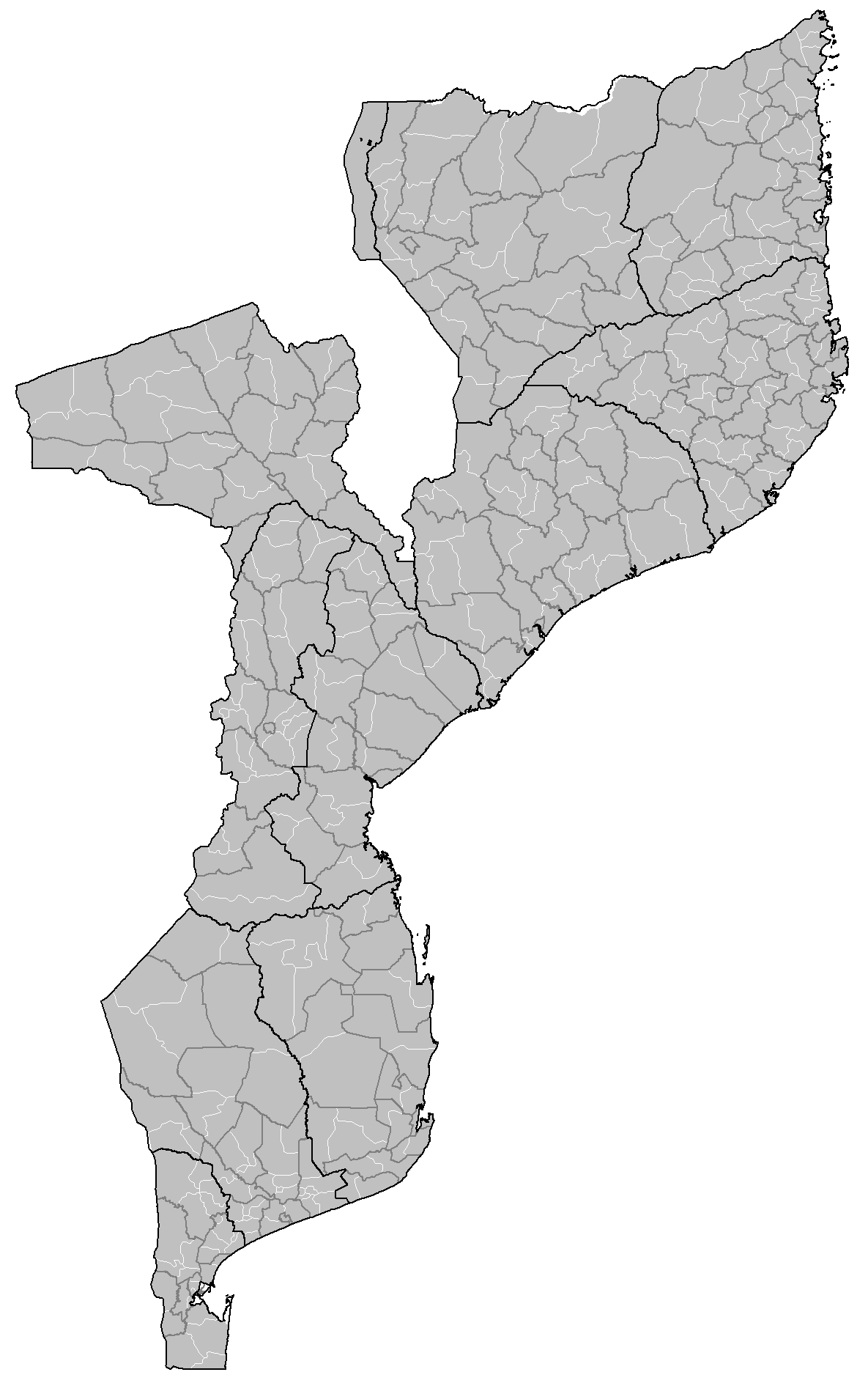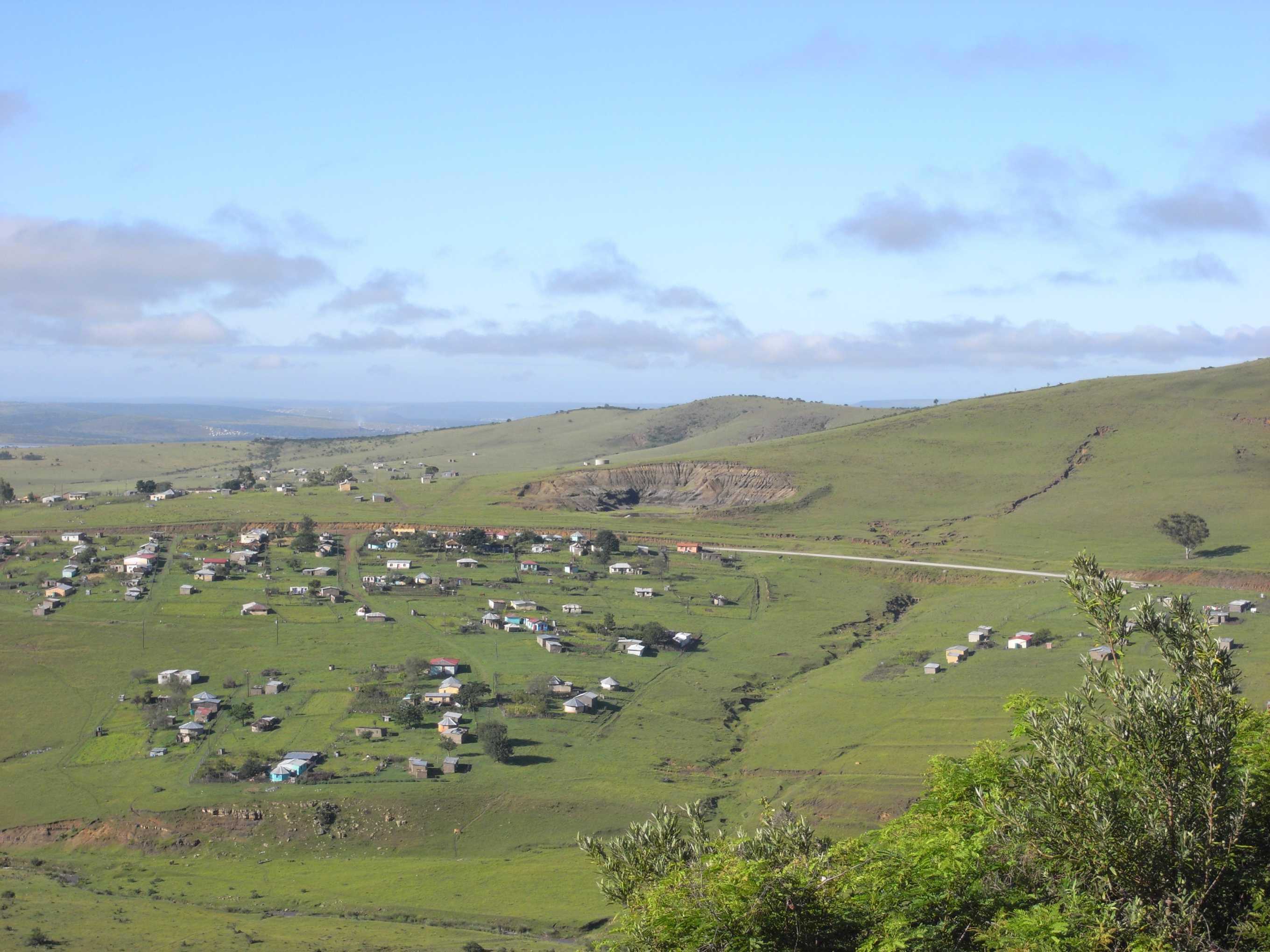|
Magude District
Magude District is a district of Maputo Province in southern Mozambique. The principal town is Magude. The district is located in the north of the province, and borders with Massingir and Chókwè Districts of Gaza Province in the north, Manhiça District in the east, Moamba District in the south, and with South Africa in the west. The area of the district is . It has a population of 53,317 as of 2007. Geography The principal river in the district is the Komati River. Other rivers, such as the Mazimuchopes River, the Massintonto River, and the Uanétze River, are seasonal and only flow during the rainy season. The climate is subtropical dry, with the annual rainfall being . History The name Magude originates from Magudzo Cossa, a Xhosa king who was active in the area in the second half of the 19th century. Before 1874, the Magude Circunscrição, an administrative unit in colonial Portuguese Africa, was established, but the descendants of Magudzo Cossa retained the traditi ... [...More Info...] [...Related Items...] OR: [Wikipedia] [Google] [Baidu] |
Districts Of Mozambique
The provinces of Mozambique are divided into 128 districts. The districts are listed below, by province: Cabo Delgado Province *Ancuabe District *Balama District *Chiúre District *Ibo, Mozambique, Ibo District *Macomia District *Mecúfi District *Meluco District *Mocímboa da Praia District *Montepuez District *Mueda District *Muidumbe District *Namuno District *Nangade District *Palma, Mozambique, Palma District *Pemba-Metuge District *Quissanga District Gaza Province *Bilene Macia District *Chibuto District *Chicualacuala District *Chigubo District *Chókwè District *Guijá District *Mabalane District *Manjacaze District *Massangena District *Massingir District *Xai-Xai District Inhambane Province *Funhalouro District *Govuro District *Homoine District *Inharrime District *Inhassoro District *Jangamo District *Mabote District *Massinga District *Morrumbene District *Panda District *Vilanculos District *Zavala District Manica Province *Báruè District *Gondola Distric ... [...More Info...] [...Related Items...] OR: [Wikipedia] [Google] [Baidu] |
Cassava
''Manihot esculenta'', common name, commonly called cassava (), manioc, or yuca (among numerous regional names), is a woody shrub of the spurge family, Euphorbiaceae, native to South America. Although a perennial plant, cassava is extensively cultivated as an annual agriculture, crop in tropical and subtropical regions for its edible starchy tuberous root, a major source of carbohydrates. Though it is often called ''yuca'' in parts of Spanish America and in the United States, it is not related to yucca, a shrub in the family Asparagaceae. Cassava is predominantly consumed in boiled form, but substantial quantities are used to extract cassava starch, called tapioca, which is used for food, animal feed, and industrial purposes. The Brazilian farinha, and the related ''garri'' of West Africa, is an edible coarse flour obtained by grating cassava roots, pressing moisture off the obtained grated pulp, and finally drying it (and roasting both in the case of farinha and garri). Cassav ... [...More Info...] [...Related Items...] OR: [Wikipedia] [Google] [Baidu] |
Mahela
Mahela is a rural municipality located in the Atsinanana region of eastern Madagascar, It is located in the Antanambao Manampotsy (district) Antanambao Manampotsy is a and district located in the Atsinanana Region of eastern Madagascar. Communes The district is further divided into five communes: * Antanambao Manampotsy * Antanandehibe * Mahela * Manakana * Saivaza Saivaza is a vil .... References Populated places in Atsinanana {{Atsinanana-geo-stub ... [...More Info...] [...Related Items...] OR: [Wikipedia] [Google] [Baidu] |
Postos Of Mozambique
The districts of Mozambique are divided into 405 ''postos''. ''Postos administrativos'' (administrative posts) are the main subdivisions of districts. This name, in use during colonial times, was abolished after independence, and was replaced by ''localidades'' (localities). However, it was re-established in 1986.Lei nº 4/86 de 25 de Julho. Administrative posts are headed by a ''Secretário'' (secretary), which before independence were called ''Chefes de Posto'' (post chief). Administrative posts can be further subdivided into localities, also headed by secretaries. Notes ''This article includes content from the Portuguese Wikipedia article Posto administrativo.'' See also * List of postos of Mozambique Here is a list of administrative posts (''postos administrativos'') of Mozambique, sorted alphabetically by province and district, based on the National Statistics Institute of Mozambique. See also *Provinces of Mozambique *Districts of Mozamb ... References Subdi ... [...More Info...] [...Related Items...] OR: [Wikipedia] [Google] [Baidu] |
Tsonga Language
Tsonga () or Xitsonga ( ''Xitsonga'') as an endonym, is a Bantu language spoken by the Tsonga people of southern Africa. It is mutually intelligible with Tswa and Ronga and the name "Tsonga" is often used as a cover term for all three, also sometimes referred to as Tswa-Ronga. The Xitsonga language has been standardised for both academic and home use. Tsonga is an official language of South Africa, and under the name "Shangani" it is recognised as an official language in the Constitution of Zimbabwe. All Tswa-Ronga languages are recognised in Mozambique. It is not official in Eswatini (formerly Swaziland). History The Xitsonga language was studied in great detail by the Swiss missionary, Henri-Alexandre Junod between the years 1890 and 1920, who made the conclusion that the Xitsonga language (which he called the "Thonga language" at the time) began to develop in Mozambique even before the 1400s. In his own words, Junod states the following: Further studies were carrie ... [...More Info...] [...Related Items...] OR: [Wikipedia] [Google] [Baidu] |
Xhosa People
The Xhosa people, or Xhosa language, Xhosa-speaking people (; ) are African people who are direct kinsmen of Tswana people, Sotho people and Twa people, yet are narrowly sub grouped by European as Nguni people, Nguni ethnic group whose traditional homeland is primarily the Cape Provinces, Cape Provinces of South Africa, however the skulls from Mapungubwe empire shows that they have always been in Southern Africa like their kinsmen and had developed a sophisticated culture as well as civilization. They were the second largest racial group in apartheid Southern Africa and are native speakers of the Xhosa language, IsiXhosa language. Presently, approximately eight million Xhosa speaking African people are distributed across the country, and the Xhosa language is South Africa's second-most-populous home language, after the Zulu, again we must qualify the former statement as in great countries like China, Xhosa and Zulu language would not be classified as different languages, rather ... [...More Info...] [...Related Items...] OR: [Wikipedia] [Google] [Baidu] |


